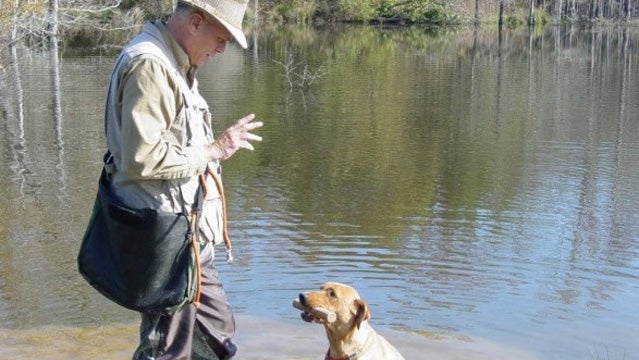No matter what discipline—hunting, service, adventure—you’re training your dog for, he’ll require one very important behavior for success: focus. Focus is a byproduct of patience, concentration, and biddability (the dog’s willingness to please). If a young dog lacks appropriate focus, he’s neither going to learn nor retain what you teach him. Eye contact is the benchmark of focus. I like to see the dog stare straight into my eyes for a few seconds, awaiting instruction. (This means you can’t train with sunglasses, handlers!)
The Ultimate �����ԹϺ��� Companion
All you need to know about going wild with man’s best friend.If you hold the dog’s gaze, you’re a leader and your instructions will likely get the attention they require. Learning will take place. Own the eyes and you own the dog. No eye contact, on the other hand, is indicative of an independent nature, lack of concentration, or avoidance. Before you can go on to any other training, build focus.
I look for three levels of focus in training, each occurring at different stages. Here’s Stage I. We’ll get to Stages II and III in future posts.
With the young pup—three to five months old—I expect brief but direct eye contact. At this age, I’ll use a primary motivator like a treat, food at feeding time, or the youngster’s favorite bumper. (One of the reasons I withhold chew toys is because they lessen the value of the object as a reward if the pup can have access to them any old time. This way, we reinforce that all good things—bumpers included—come through me.) When your youngster offers eye contact, immediately reward the behavior with a verbal “good” and a quick treat. Once the pup understands how to sit patiently, set the pup off the ground on a bench. Hold the treat out to the side at arm’s length. Remain perfectly still and quiet. This must be a voluntary action on the part of the pup. When the pup glances at your eyes, reward him/her with a verbal “good” and the treat. The pup quickly learns the association: eye contact = verbal marker = reward. Gradually extend the duration of the eye contact required to earn the reward.
I’m very cautious about the use—or, rather the overuse—of treats for training retrievers. Treats often promote mouthing problems and, later, delivery difficulties. Remember Wildrose Law #4: Do not condition in a problem that must be trained out later. Limit the use of treats by moving to the bumpers, praise, and pets as rewards as soon as the dog is willing to offer behaviors for those other motivators.
Focus is a must for handling retrievers, adventure dogs, and alert dogs. These dogs are biddable team players requiring an interdependent relationship with their pack leader. Eye contact is the first step.
This article originally appeared on �����ԹϺ��� K9, the former dog blog of �����ԹϺ��� magazine, on May 11, 2009.


